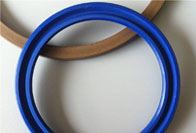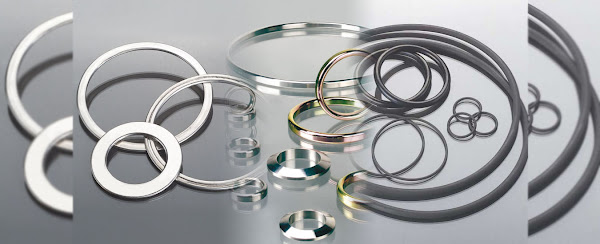What Are O-Rings? And How Do They Work?
What is O-Ring?
O-rings are used in many different situations to seal off leaks of fluid and gas. They are frequently used to seal connections and stop leaks in hydraulic and pneumatic systems. O-rings are also used in consumer products like garden hoses and faucets to create a watertight seal.
The right O-ring selection is essential. They are also known as toric joints and serve as seals. Living up to their name, o-rings have a circular, o-shaped design with a round cross-section. The mating surfaces of gas or liquid passages can be fastened with them. O-rings have a similar design, but they come in a variety of types. Here are five things to consider when choosing O-rings.
We, Gasco INC, are one of the best O Rings Supplier In India. We provide a selection of O Rings. We also sell gaskets, O rings, seal rings, and gland packings. We offer the best products and hold ISO certification. O Rings, also known as packing or toric joints, are made for industrial use by Gasco INC and are capable of withstanding the harshest conditions. It works with static and dynamic applications in both scenarios.
History of the O-Ring
J. O. Lundberg is the inventor of the O-ring. The circular-looped gasket was patented by the Lundberg company in 1896. The O-ring slowly made its way across the Atlantic Ocean despite being created in Sweden. Niels Christensen, a skilled machinist, submitted the first O-ring patent application in the US in 1937. It's intriguing, though, that Christensen chose not to keep this patent.
The O-ring patent was taken over by the American government during World War II, who cited its importance to the war efforts of the Allies. Despite releasing the design of the O-ring into the public domain and paying Christensen for his patent, which enabled businesses from the East Coast to the West Coast to manufacture and market their own O-rings.
Materials Used to Make O-Rings
O-rings come in a wide variety of materials, each of which has unique characteristics. The following are some of the materials that are most frequently used to create O-rings:
Fluoroelastomer: Fluoroelastomer O-rings are heat-resistant, strong, and long-lasting, and they are frequently used in applications where heat is a problem.
Silicone rubber: Silicone rubber O-rings have a soft, spongy design, and the food service industry uses them because they are non-toxic and secure.
Ethylene propylene diene monomer: Ethylene propylene diene monomer O-rings provide strong resistance to moisture, steam, silicone, and grease but are not suitable for use with lubricants or fuels.
Thermoplastic polyurethane: Thermoplastic polyurethane O-rings are resistant to degradation and have a high tensile strength.
Sealing Pressure
It's critical to take the maximum amount of pressure the o-ring can withstand into account when selecting O-rings. O-rings are made to naturally compress when positioned between two surfaces that are intended to work together, stopping the leakage of either liquid or air. However, an O-ring may break if excessive pressure is applied to it.
Some O-rings, according to Wikipedia, can seal at pressures of up to 5,000 pounds per square inch (PSI). Even though most manufacturers won't need to seal surfaces under such high pressure, this illustrates the effectiveness of O-rings as sealants.
O-rings are frequently used in pumps, cylinders, connectors, and valves where they stop the leakage of fluids and gases by filling gaps between various parts. They can be used with static, dynamic, hydraulic, and pneumatic components, making them an especially flexible solution to a common engineering challenge.
Product Source : O Rings Manufacturers In India



.png)
Comments
Post a Comment